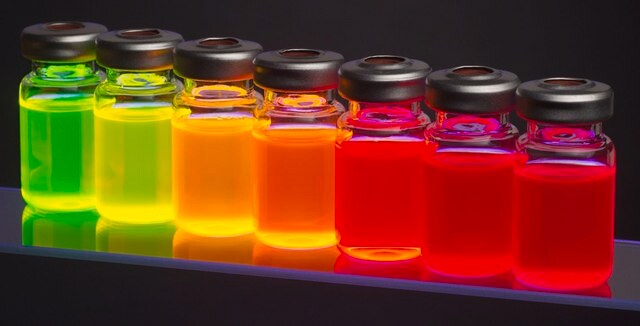おすすめの製品
関連するカテゴリー
アプリケーション
QD溶液を調製するためのプロトコル(QDを溶液に分散させる):
1.望ましい量の量子ドット粉末を量り、ガラスバイアルに入れます。
2.必要な量の溶媒、すなわちトルエン、クロロホルム、ヘキサンなど(主に非極性有機溶媒)をバイアルに加え、振とうします。
3.振とう後にバイアルに固形物が残っている場合は、バイアルを30~60秒間超音波処理して、量子ドット粉末を十分に分散させます。必要に応じて、溶液をさらに希釈してください。
適切に保管した場合、材料の有効期間は約3年です。室温(4~25°C)で保管し、凍結させないでください。極端な温度に曝露させないでください。
法的情報
シグナルワード
Danger
危険有害性の分類
Acute Tox. 4 Inhalation - Acute Tox. 4 Oral - Aquatic Acute 1 - Aquatic Chronic 1 - Eye Dam. 1 - Skin Irrit. 2 - STOT RE 2 - STOT RE 2 Oral
ターゲットの組織
Kidney,Bone, Liver,Gastrointestinal tract,Immune system
補足的ハザード
保管分類コード
11 - Combustible Solids
WGK
WGK 3
引火点(°F)
Not applicable
引火点(℃)
Not applicable
適用法令
試験研究用途を考慮した関連法令を主に挙げております。化学物質以外については、一部の情報のみ提供しています。 製品を安全かつ合法的に使用することは、使用者の義務です。最新情報により修正される場合があります。WEBの反映には時間を要することがあるため、適宜SDSをご参照ください。
毒物及び劇物取締法
毒物
PRTR
第一種指定化学物質
特定第一種指定化学物質
労働安全衛生法名称等を表示すべき危険物及び有害物
名称等を表示すべき危険物及び有害物
労働安全衛生法名称等を通知すべき危険物及び有害物
名称等を通知すべき危険物及び有害物
Jan Code
748129-10MG-PW:
748129-BULK:
748129-10MG:4548173342955
748129-VAR:
748129-25MG-PW:
748129-25MG:4548173342962
最新バージョンのいずれかを選択してください:
資料
Since the first report of the low-cost dye-sensitized solar cell (DSSC) in 1991 by Gratzel and his coworker,1 dye-sensitized solar cells (DSSC) has been regarded as one of the most promising photovoltaic technologies because of their transparent and colorful characteristics, as well as low cost.
Since the first report of the low-cost dye-sensitized solar cell (DSSC) in 1991 by Gratzel and his coworker,1 dye-sensitized solar cells (DSSC) has been regarded as one of the most promising photovoltaic technologies because of their transparent and colorful characteristics, as well as low cost.
Professor Sharma and colleagues review the synthesis and applications of this novel material. This includes a discussion of the unique properties of quantum dots and their suitability for solar cell applications, along with common synthesis techniques used to develop these materials.
Professor Xiaohu Gao (University of Washington, USA) provides a overview of recent quantum dot (QD) advancements and their potential for advancing bioassay and bioimaging technologies.
Global Trade Item Number
| カタログ番号 | GTIN |
|---|---|
| 748129-10MG | 4061833038321 |
| 748129-25MG | 4061832891873 |
ライフサイエンス、有機合成、材料科学、クロマトグラフィー、分析など、あらゆる分野の研究に経験のあるメンバーがおります。.
製品に関するお問い合わせはこちら(テクニカルサービス)








